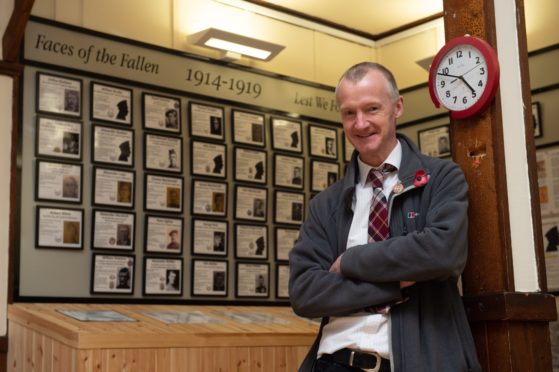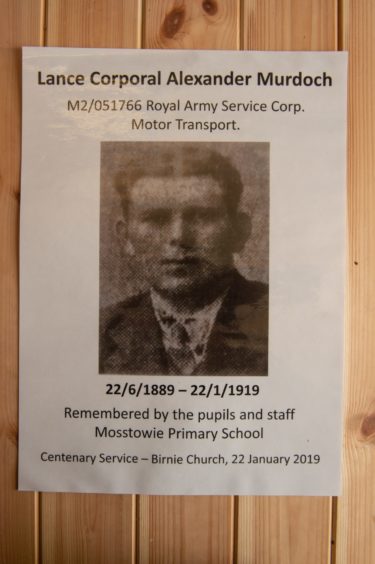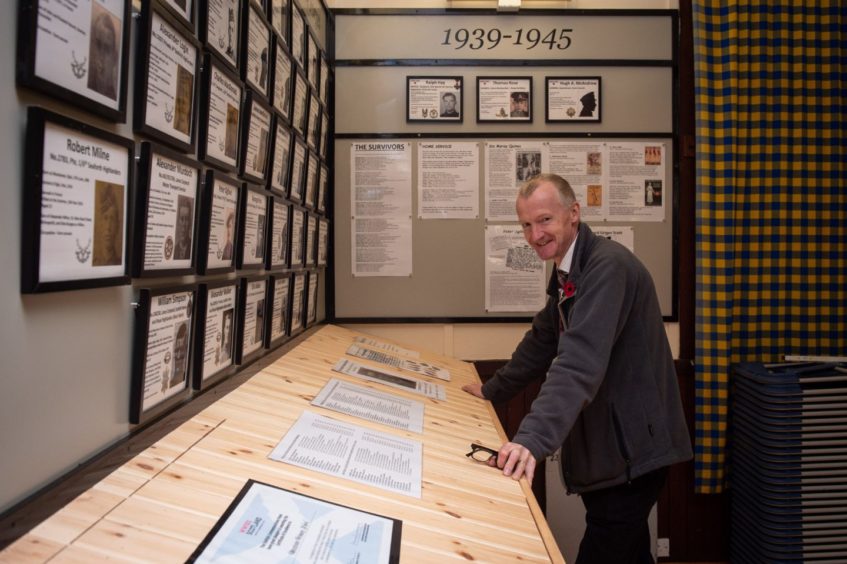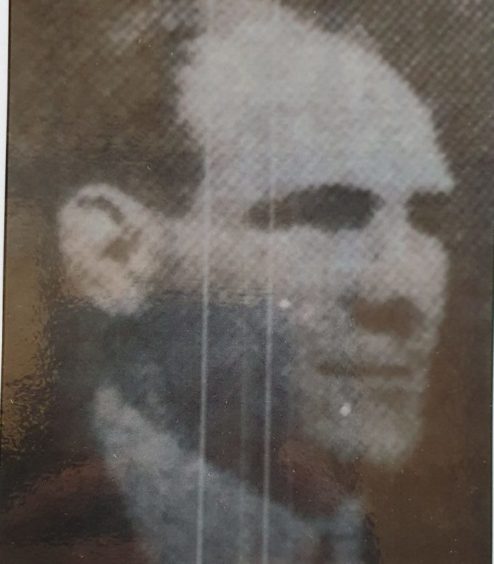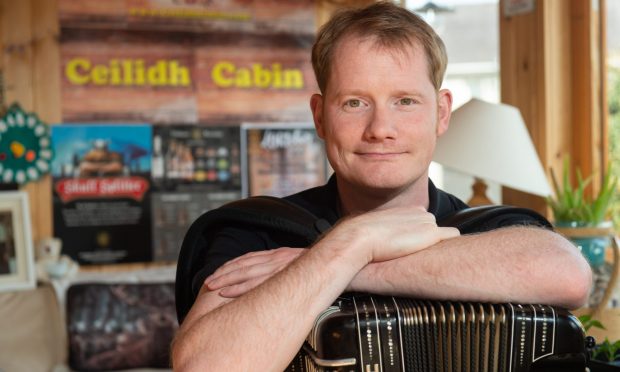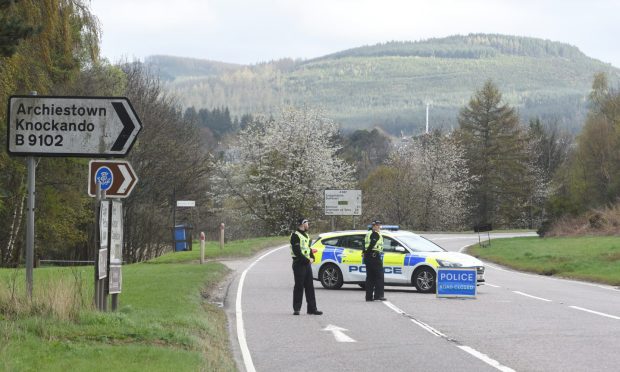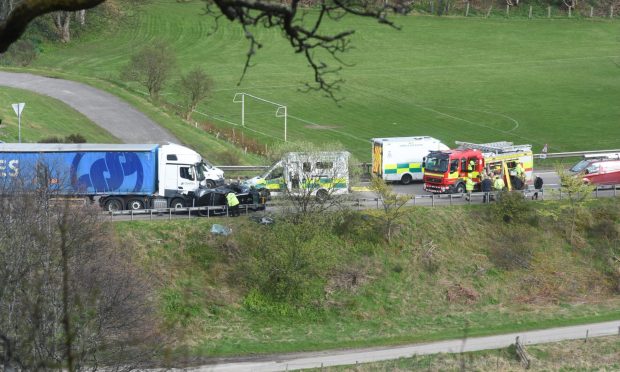The devastating way both world wars changed the face of a Moray village has been outlined in a display following nine years of painstaking research.
The original stone memorial outside Miltonduff Hall lists the 20 local farm workers, tradesmen and police officers who lost their lives during the conflicts.
However, investigations carried out by Garry Forgie, head teacher of the village’s Mosstowie Primary, and school pupils, have uncovered a further 21 who had links to the community.
Meanwhile, a list of survivors who returned home from the continent reached 76 with the latest name added just hours before the Faces of the Fallen display opened yesterday.
The new memorial, which will become a permanent feature in the hall, lists the First World War as running from 1914 to 1919 – one year after the guns fell silent.
Mr Forgie said: “It was a deliberate choice, we didn’t think a lot of people would notice.
“There was a soldier Alexander Murdoch who survived the war itself but caught pneumonia as he was travelling back home.
“It wasn’t until the January that he actually passed away so we thought it would be right to mark that.
“His gravestone is nearby and when we found it it was at a horrendous angle, it would have been lost to time, but we were able to contact a firm in Elgin who repaired it for free in time for us to hold a service to mark the centenary of his death.”
Mr Forgie and school pupils trawled through extensive newspaper archives held at Elgin Library to piece together the lives of those involved in the village’s contribution to the war effort.
Investigations by students even established that Private John Hutcheson, who died after being wounded in battle in France when he was just 24, is the distant relative of two current pupils.
Spaces have also been left in the memorial so more names and photographs can be added.
Mr Forgie added: “What started the project off was hearing about Edward Grigor Scott, who was actually born in the school building. He was the son of the head teacher at the time.
“It really captured the imagination of the pupils that he was born in the room through the wall from their classroom.
“Finding details of those killed always brought mixed feelings but finding a survivor was also a cause of celebration.”
Moray MSP Richard Lochhead, who visited the exhibition, said: “Seeing the pictures of mainly young men who were farm workers and tradespeople in Moray and then went to war and never returned reminds us all about how important it is to never forget them. “
The Miltonduff soldier who became boxing champion in India
One Miltonduff cattleman rose from a life on the farm to becoming a champion boxer in India through his military service.
John Matheson, who was born in the village in 1886, spent his early life working on the land with records showing him working at Cairneyhillock when he was just 15 years old.
He joined the Army six years before the First World War and was quickly detached to serve overseas.
During his time in India his fighting prowess led him to being crowned the country’s welterweight boxing champion – a career he continued after returning home as a professional fighter.
For several years he toured fairgrounds across the country, boxing under the name The Fighting Scot.
The outbreak of war took him back to the Army in 1914 with the 6th Seaforth Highlanders – but within two years he was discharged after receiving serious wounds to his neck during fighting in France.
He continued to aid the battalion’s war efforts from Aberdeen but died in February 1919 at the age of 33 from flu and pneumonia linked to the effects of his war injury.
